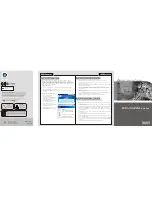
Chapter 4
Analog Input
X Series User Manual
4-24
ni.com
Using the DAQ Assistant, yo
u
can config
u
re the channels for RSE or NRSE
inp
u
t modes. Refer to the
Configuring AI Ground-Reference Settings in
Software
section for more information abo
u
t the DAQ Assistant.
Field Wiring Considerations
Environmental noise can serio
u
sly affect the meas
u
rement acc
u
racy of the
device if yo
u
do not take proper care when r
u
nning signal wires between
signal so
u
rces and the device. The following recommendations apply
mainly to AI signal ro
u
ting to the device, altho
u
gh they also apply to signal
ro
u
ting in general.
Minimize noise pick
u
p and maximize meas
u
rement acc
u
racy by taking the
following preca
u
tions:
•
Use differential analog inp
u
t connections to reject common-mode
noise.
•
Use individ
u
ally shielded, twisted-pair wires to connect AI signals to
the device. With this type of wire, the signals attached to the positive
and negative inp
u
t channels are twisted together and then covered with
a shield. Yo
u
then connect this shield only at one point to the signal
so
u
rce gro
u
nd. This kind of connection is req
u
ired for signals traveling
thro
u
gh areas with large magnetic fields or high electromagnetic
interference.
Refer to the NI Developer Zone doc
u
ment,
Field Wiring and Noise
Considerations for Analog Signals
, for more information. To access this
doc
u
ment, go to
ni.com/info
and enter the Info Code
rdfwn3
.
Analog Input Timing Signals
In order to provide all of the timing f
u
nctionality described thro
u
gho
u
t this
section, MIO X Series devices have a flexible timing engine. Fig
u
re 4-12
s
u
mmarizes all of the timing options provided by the analog inp
u
t timing
engine. Also refer to the
Clock Routing
section of Chapter 9,
Digital
Routing and Clock Generation
.
Artisan Technology Group - Quality Instrumentation ... Guaranteed | (888) 88-SOURCE | www.artisantg.com
















































